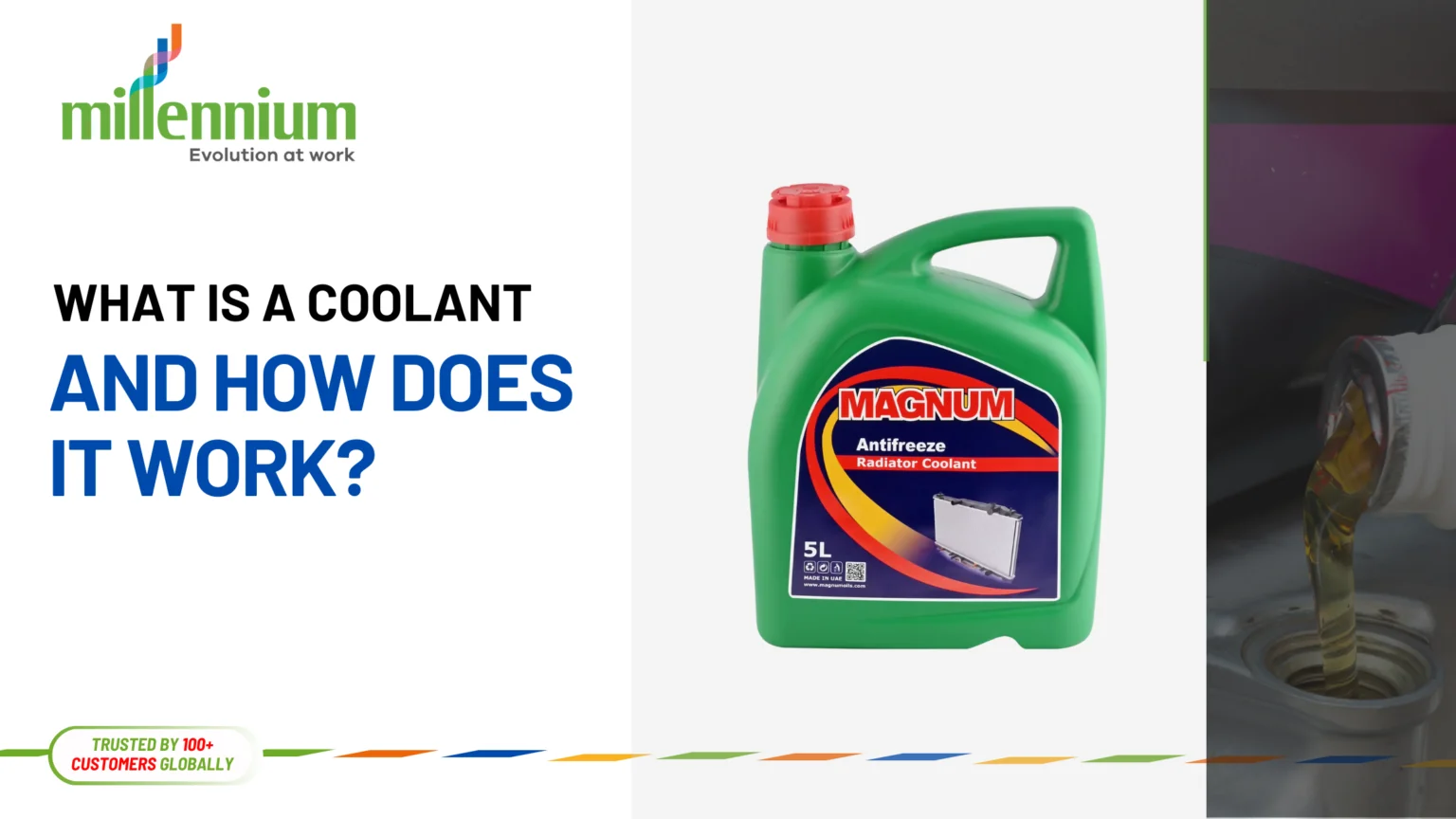What is a Coolant and How Does it Work?
In automotive and industrial machinery, temperature control is crucial for smooth operation and long-term reliability. One of the key substances responsible for managing heat is coolant . Whether in car engines, HVAC systems, or industrial equipment, coolant plays a vital role in ensuring optimal temperature regulation and preventing damage due to overheating or freezing.
What is Engine Coolant?
Engine coolant, also known as antifreeze, is a specially formulated liquid used in engines to absorb heat and transfer it away from the engine block to the radiator, where it is released into the air. Most coolants are a mixture of water and ethylene glycol or propylene glycol, combined with various corrosion inhibitors and additives.
Coolant circulates through the engine via the cooling system, maintaining the engine at its ideal operating temperature and protecting components from extreme temperature fluctuations.
How Does a Coolant Work?
Coolant works through a closed-loop system involving several components:
- Heat Absorption: As the engine runs, it generates heat. The coolant absorbs this excess heat from the engine block and cylinder head.
- Circulation: A water pump circulates the hot coolant through the system. It moves the coolant from the engine to the radiator and back again.
- Heat Dissipation: In the radiator, air passing through the fins cools the fluid. This cooled coolant is then recirculated back into the engine to continue absorbing heat.
- Temperature Regulation: The thermostat ensures coolant only flows to the radiator when the engine reaches a certain temperature, helping the engine warm up quickly and avoid overcooling.
- Anti-Boil and Anti-Freeze Properties: Coolant increases the boiling point and lowers the freezing point of the fluid inside the engine. This allows the vehicle to operate in both very hot and very cold environments without coolant boiling or freezing.
Why Coolant is Important?
Without a proper cooling system, engines can overheat or seize, leading to serious damage or even complete failure. Coolant serves multiple essential functions:
1. Prevents Overheating
Engines operate at high temperatures, and without coolant, heat would accumulate rapidly, damaging internal components such as pistons, gaskets, and valves.
2. Protects Against Freezing
In cold climates, water alone would freeze inside the engine, causing expansion and potentially cracking the engine block. Coolant prevents this by lowering the freezing point.
3. Corrosion Prevention
Modern coolants contain additives that protect the metal parts of the cooling system — such as the radiator, water pump, and cylinder head — from corrosion and rust.
4. Lubrication
Coolant helps lubricate moving parts it comes in contact with, like the water pump seals, extending their lifespan.
5. Maintains Optimal Performance
By keeping the engine at a stable temperature, coolant ensures fuel burns efficiently, emissions stay low, and overall engine performance remains consistent.
Different Types of Coolant
Several types of coolant are available, each designed for specific engine materials, environmental conditions, and vehicle requirements.
1. Inorganic Additive Technology (IAT)
- Common in older vehicles.
- Usually green in color.
- Contains silicates and phosphates to prevent corrosion.
- Requires replacement every 2-3 years.
2. Organic Acid Technology (OAT)
- Common in modern vehicles.
- Typically orange, red, or dark green.
- Uses organic acids for corrosion protection.
- Lasts up to 5 years or 150,000 miles.
3. Hybrid Organic Acid Technology (HOAT)
- Combines the benefits of IAT and OAT.
- Usually yellow or turquoise.
- Suitable for vehicles with mixed-metal engine components.
- Change interval is generally 5 years or 150,000 miles.
4. Propylene Glycol-Based Coolant
- Less toxic alternative to ethylene glycol-based coolant.
- Common in eco-friendly or food-related applications.
Characteristics of a Good Coolant
A high-quality coolant should have the following features:
- High Boiling Point and Low Freezing Point: Enables the engine to operate in extreme temperatures.
- Corrosion Resistance: Protects internal engine and cooling system components.
- Thermal Conductivity: Efficiently transfers heat away from engine parts.
- Chemical Stability: Resists degradation over time and under high operating temperatures.
- Compatibility: Works well with the engine materials, such as aluminum, iron, and plastics.
- Non-Foaming: Prevents air bubbles that can reduce heat transfer and cause hotspots.
Regular testing and monitoring of coolant condition are important to ensure these properties remain effective over time.
Conclusion
Coolant is far more than just colored liquid in a car’s radiator — it is a critical component in maintaining engine health and efficiency. By absorbing and dissipating heat, preventing corrosion, and ensuring smooth engine operation in extreme temperatures, coolant protects against engine failure and expensive repairs.
Understanding how coolant works and choosing the right type for your vehicle or machinery can extend engine life, improve performance, and lower maintenance costs. Regular checks and timely replacement of coolant according to manufacturer recommendations ensure your engine stays cool, clean, and running efficiently year-round.

